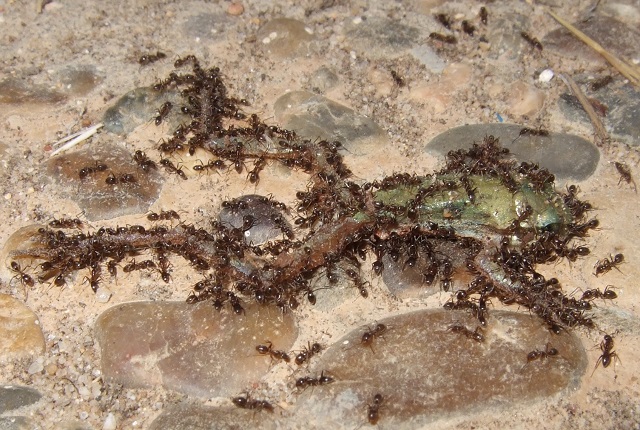Invasive species have major impacts on biodiversity and are one of the primary causes of amphibian decline and extinction. Unlike other top ant invaders that negatively affect larger fauna via chemical defensive compounds, the Argentine ant (Linepithema humile) does not have a functional sting. Nonetheless, it deploys defensive compounds against competitors and adversaries. Levels of ant aggression toward 3 native terrestrial amphibians were estimated by challenging juveniles in field ant trails and in lab ant foraging arenas. The composition and quantities of toxin in L. humile were measured by analyzing pygidial glands and whole?body contents. The mechanisms of toxicity in juvenile amphibians were examined by quantifying the toxin in amphibian tissues, searching for histological damages, and calculating toxic doses for each amphibian species. To determine the potential scope of the threat to amphibians, global databases were used to estimate the number, ranges, and conservation status of terrestrial amphibian species with ranges that overlap those of L. humile. Juvenile amphibians co?occurring spatially and temporally with L. humile die when they encounter L. humile on an ant trail. In the lab, when a juvenile amphibian came in contact with L. humile the ants reacted quickly to spray pygidial?gland venom onto the juveniles. Iridomyrmecin was the toxic compound in the spray. Following absorption, it accumulated in brain, kidney, and liver tissue. Toxic dose for amphibian was species dependent. Worldwide, an estimated 817 terrestrial amphibian species overlap in range with L. humile, and 6.2% of them are classified as threatened. These findings highlight the high potential of L. humile venom to negatively affect amphibian juveniles and provide a basis for exploring the largely overlooked impacts this ant has in its wide invasive range. informacion[at]ebd.csic.es: Álvarez-Blanco et al (2020) Effects of the Argentine ant venom on terrestrial amphibians. Conservation Biology DOI 10.1111/cobi.13604
https://conbio.onlinelibrary.wiley.com/doi/abs/10.1111/cobi.13604








 Las altas temperaturas están provocando que las lagunas y las marismas de Doñana pierdan agua rápidamente
Las altas temperaturas están provocando que las lagunas y las marismas de Doñana pierdan agua rápidamente



